Making it Stick
Studying chess can be much simpler than I ever thought
Welcome back to Chess in Small Doses! Happy Thanksgiving to everyone in the United States. This post is the follow up to my review of Make It Stick, a book on the science of learning. Today I’d like to tell you how I’ve tried to apply what I learned about learning to the study of chess.
Before we get into this, let me address two things. First, I’m a Class C player (USCF 1581 as I write this). I’m 1653 Rapid on Chess.com and 1838 Classical for Lichess.org, so take your chess advice from me with some caution. There’s a lot I’m still learning. However I’m also an Emergency Physician and have been a professional student most of my life. It’s more from the perspective of a lifelong learner that I speaking from today.
Secondly, my little Substack has grown significantly in the last few weeks so let me say welcome to the new subscribers, thank you for all of you who’ve subscribe, and thank you to Ben Johnson. He’s been kind enough to include my blog in his weekly Linkfest which has led to greater attention from his readers. Thanks Ben!
If you recall from the previous post, evidence based learning can be boiled down to the quote “To learn you must retrieve.” This means study needs to incorporate the following strategies:
Retrieval practice
Spaced retrieval
Interleaving
Varied practice
Our study needs to make the knowledge personal. We need to connect it to knowledge we already have by engaging with and reflecting upon what we’ve learned. What we practice needs to have a desirable difficulty, forcing our brain to work to recall the information. Lastly, we also need objectivity. Research shows that people are terrible judges of their own ability. We need some outside measure of our ability or feedback from someone more accomplished than ourselves.
So what does this all mean for chess? It means that evidence-based chess study needs to be personal, mixed, spaced out, and more challenging than we might like. Put another way, studying chess can be much simpler than I ever thought.
The fundamental problem of chess is: Find the best move in a position in the time you are given. There is a tension between analyzing and calculating to find the “truth” of the position, and the clock. This time pressure is something all chess players need to deal with and prepare for. Therefore our chess practice must replicate this tension (in my opinion).
Secondly, a chess game combines all aspects (opening, tactics, time management, mental game, strategy, endgame, calculation, etc…) but two aspects clearly are dominant: Tactics and Calculation. Those aspects are skills for us to develop and need to be the center of what we work on (in my opinion).
However, recall the example of the baseball team taking batting practice from Make it Stick. One group got their pitches in a predictable manner and the second group got them in random order. The first group got better at batting practice while the second group got better at the game. We want to be the second group. We want to get better at the game. I know a lot of players including myself who are far better at tactics than they are at the game. Perhaps we’ve been doing it wrong.
Based on the Make it Stick learning I propose the following protocol. (Remember this is my best attempt at adapting the reading/research. You may see it differently)
Mix tactics with calculation, but use a clock
Study chess resources, but identify and note key concepts
Play training game, but analyze for opening holes and critical mistakes
Make flashcards using those game positions using Anki.
Practice your openings by playing the moves on a board from memory
What’s not in here is spending countless hours on deep study of a single subject. You can try it, but if the research is to be believed that may not be the best use of your time.
#1) Tactics and Calculation
Many of us do tactics puzzles but often fail to work specifically on calculation. Tactics are “a sequence of moves that each makes one or more immediate threats” where calculation means “thinking ahead in terms of moves, not just yours but those of your opponent.”
For example this is a tactical puzzle: Can White play Bxf7+ here?
And this is a calculation puzzle: Find the best move for Black
What I do now is a timed session of tactics from the Steps Methods books. Any tactics resource will do as long as it’s difficulty enough. Aim for the level where you get 60-70% right on puzzles. To recreate the time pressure, I will give myself a time limit on each problem and then stop. Whatever answer I have after time expires is the answer I write down. Since I’m training for classical games, I’ll give myself 10 minutes. You can make the time limit whatever you want but base it on the game you’re training for (blitz < 1min, rapid 3-5 min, classical 10-20 min - in my opinion) This is key, you need to practice solving under the same time pressure you’ll have in a game.
Then I’ll move on and do the same thing but with calculation puzzles. For this I use Practical Chess Exercises but there’s other books/resources you can try. Again, I put 10 minutes on the clock and the position on the board. I write down my best answer and move on to the next puzzle.
Each individual session is about 20 minutes long. This helps me maximize my focus over that time, then I take a 5 minute break. You can do as many 20 minute sprints as you want in a day, but one for tactics and one for calculation is enough to satisfy the deliberate practice requirement.
After I’m done I check my answers for both tactics and calculation. Keeping track of your mistakes helps you to see patterns you consistently miss. After that, if I have time and energy, I’ll add on about 20 minutes of focused study time on either strategy or endgame concepts.
#2) Key Concepts
Whether you read chess books, watch videos, do Chessable courses (or whatever other tools there are out there), you need to do your best to identify the key concepts they’re trying to teach. Take notes (try Cornell notes - they’re easy and useful). Try to write out in your own words whatever you’re learning. Here’s my notes from Simple Chess for example.
At the end of a tactics/calculation session is a good time to study either strategy or endgames (in my opinion). Or you can do it separate from the tactics work, whatever works best for you. 20 minutes is about enough time for me to go through a game in Simple Chess. Going through an annotated game collection is another option. (Dan Heisman has a long list of recommended game collections if you like them). As you go through the material, do your best to identify what the author is highlighting. See if you can connect that concept to something from your own games (or even something outside of chess). Connecting new information to prior knowledge is a great strategy for learning. Keep a list of key concepts you’ve learned in your own words. Consider making flashcards to help you retain the information.
For example, what’s the best strategy for either side with Bishop vs Knight? If you can’t recall the key concepts, then I don’t care what books you’ve read because you didn’t retain it. If it’s not available on demand right now, it won’t be available over the board.
#3) Play training games
Playing chess and then analyzing is a great way to improve (or so I’m told). I’ve been playing rapid games (15+10) for training decision making. I’ve also played some blitz games (5+3) to test out my Black and White repertoire.
The critical thing is I get nothing from the games unless I analyze them. The whole analysis part can be overwhelming (at least for me) and the nuggets can get lost in the endless analysis. For this protocol, the analysis is focused on two things: the opening and the critical mistakes. For the opening, I’m looking for the last move when I was 100% certain what to do next.
This is a position I’d never seen before despite playing the Caro Kann for several years. After the game was over I identified this position as “new to me” and saved the position for review later.
For critical positions, I’m looking for positions where I missed a key tactic or just calculated wrong. You can analyze it by yourself, with a stronger player or coach, or let the engine show you. Whatever you do, save the positions you feel you “should” have seen. For example, this position below. If I tell you there’s a tactic I’m sure you’ll find it.
What I missed was the bishop on g7 is undefended so Nd5! is very strong, attacking the Queen with tempo. It’s a one move tactic but it’s easy to miss (at least for me). After 1.Nd5 Qd8 2.Nxf6 Bxf6 3.Bxf6 exf6 4.Qxd6 and White is winning. I saved this position for study later as it was something I felt I “should” have seen but didn’t recognize in game. That’s a gap I can fill by coming back to this position in the future and trying again.
The point is each game isn’t just a game. Instead it’s a chance to learn something new about yourself. Analyzing the games focused on when you left your opening knowledge and critical positions that you missed will help you learn. Each game then can become one more small step to getting better, even if you lose… especially when you lose.
#4) Make flashcards
If you’re not familiar with Anki flashcards, please take a minute to read Dan Bock’s post on using flashcards to improve at chess. To summarize, Anki is a free software that lets you make your own electronic flashcards. They have a mobile app that cost $25 or you can just have it on your computer for free.
Making a flashcard is easy. Take a position you want to review again. You can take a screen shot of the position and then upload the image to the “front” of the flashcard. Put the solution on the “back” and save it. Your card will come up periodically depending on their algorithm. However difficult you felt the card was to solve will tell the software when to repeat the card.
I have a deck for my Opening Repertoire and a deck for Critical Positions. After each study session or game, I upload positions I got wrong. That way whatever it was I was missing gets repeated. I may recall the solution, but the spaced repetition means I have likely forgotten the solution and have to work to recall the answer. This is exactly the kind of low stakes quiz that cements things into your long term memory.
Each and every study session or game I play, there’s a position that will go into the flashcards making them all the more meaningful. It’s helped me reframe losses into something potentially positive. In fact every position in this post is from one of my cards.
#5) Practice opening retrieval
Lastly, there’s the opening work. Openings books, course, and videos are chess players kryptonite, we’re always hoping it’ll be the one that leads us to never ending success. There are so many openings to play, practice and so many ways to learn them that it’s overwhelming. However, we have established that repeated exposure to knowledge doesn’t lead to learning. Repeated retrieval does. I suggest a simple protocol: see if you can recreate your opening over the board from memory.
Sit down over the board and play out your first 5-10 moves “by hand”(you can do this online too but I like the 3D pieces). You’re testing (and reinforcing) your memory of that specific line. Then ask questions of the line. What would you do if there was a different move played on move 3? On move 5? Do you know? I’ll die on this hill, but if it’s not in your head right now it certainly won’t be over the board no matter what you have in your opening file.
While you're at it, take notes. What would you play differently? Try your best to answer the question, even if you’re dead wrong it still helps learning. Only then, after you’ve tried to solve it on your own, can you look up the answer in your opening resource. This method of trying to get the answer before you’re shown how to do something is another key strategy for retaining information better. You don’t have to be right, you just have to be invested in the answer. Also feel free to make a flashcard from positions that give you a hard time. This whole session can be done 20-30 minutes.
Summary
My coach told me once that improvement is either adding new knowledge/skill or removing a weakness. I don’t know of any suggested course of chess study that helps you self identify all your gaps, but I think this one does. Please tell me if I’m wrong on either part. You don’t need to subvert your own instincts to someone else’s, you need to train them. You don’t need endless hours of study on single topics to get better, you just need focused work. What you need to improve is deliberate practice that is varied and spaced out, focused on the act of retrieval.
Mix your tactics with calculation, but give yourself a time limit on each problem.
Study whatever resource you want, but focus on identifying the key concepts.
Play games and look for positions where you didn’t know what to do.
Make flashcards of those positions with answers you understand.
Practice learning your openings “by hand”.
You may feel like you’re not doing enough of any one thing. But if the research is to be believed, you’ll retain a lot more for the time you invest. For all of us, time is a scarce resource. It’s my sincere hope that this structure gives both you and I the best bang for our buck. You don’t need to be afraid of losing any more, as it’s one more way to learn what you didn’t understand yesterday.
Thank you for reading and joining me on this journey. I hope this was as mind blowing for you as it was for me. Please leave a comment on this post, good or bad. This is my best attempt at converting what I learned in Make it Stick for chess. I’d love to hear your thoughts and perspective. If you liked it please share the post.


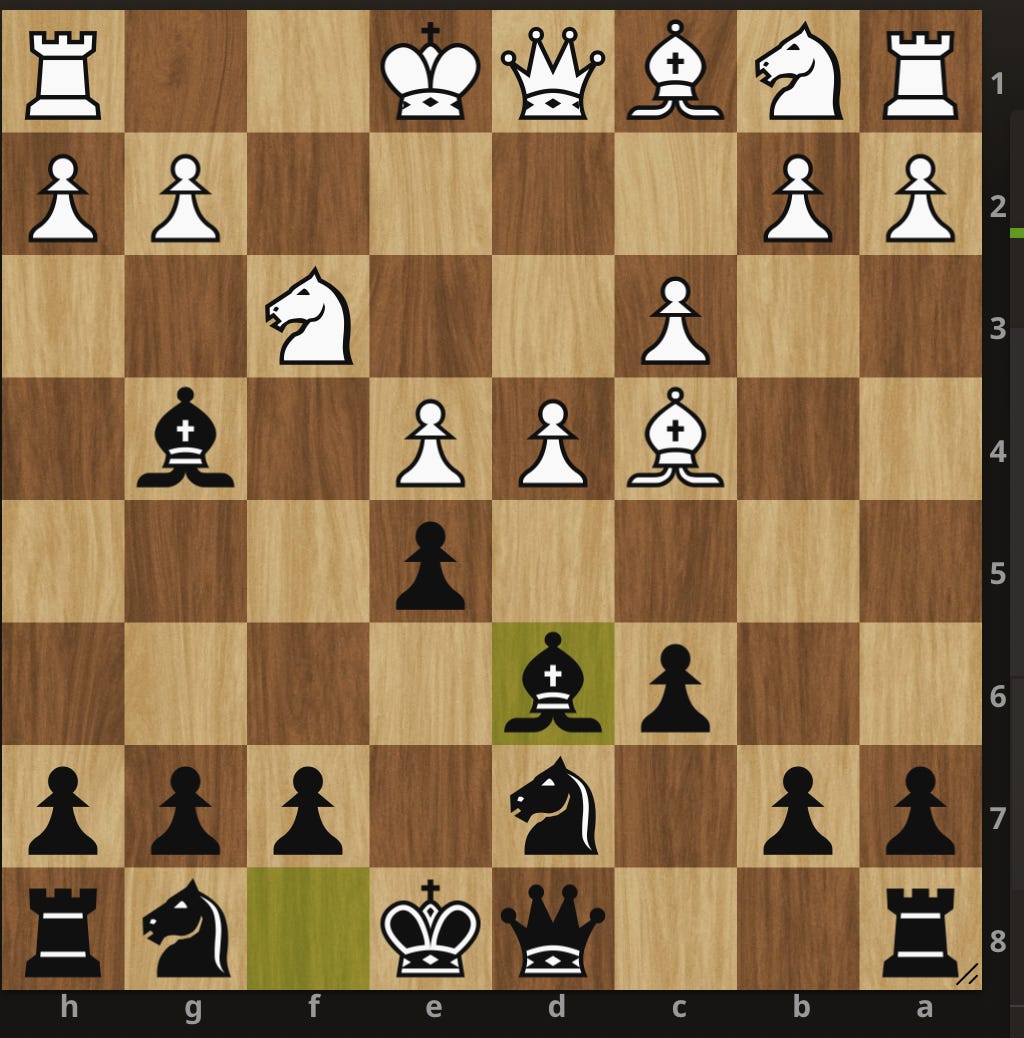
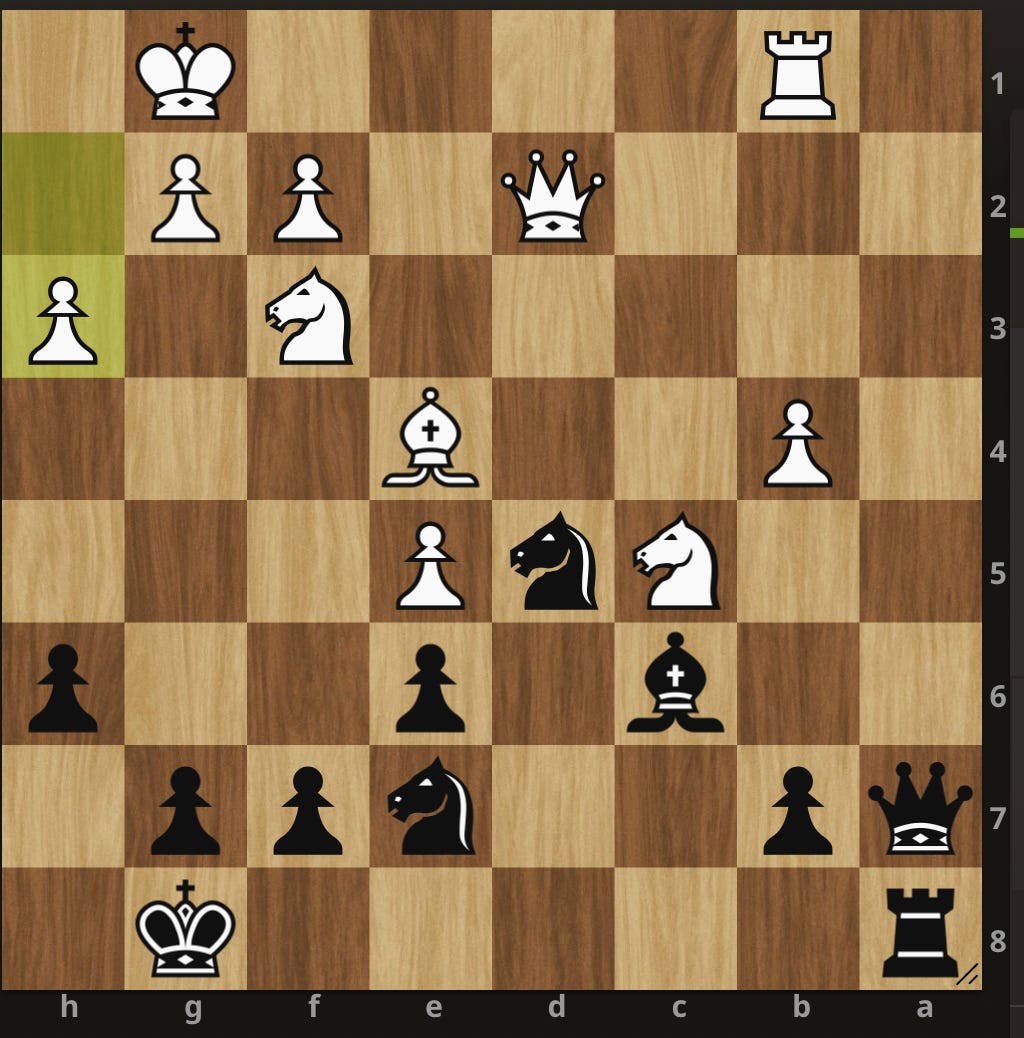
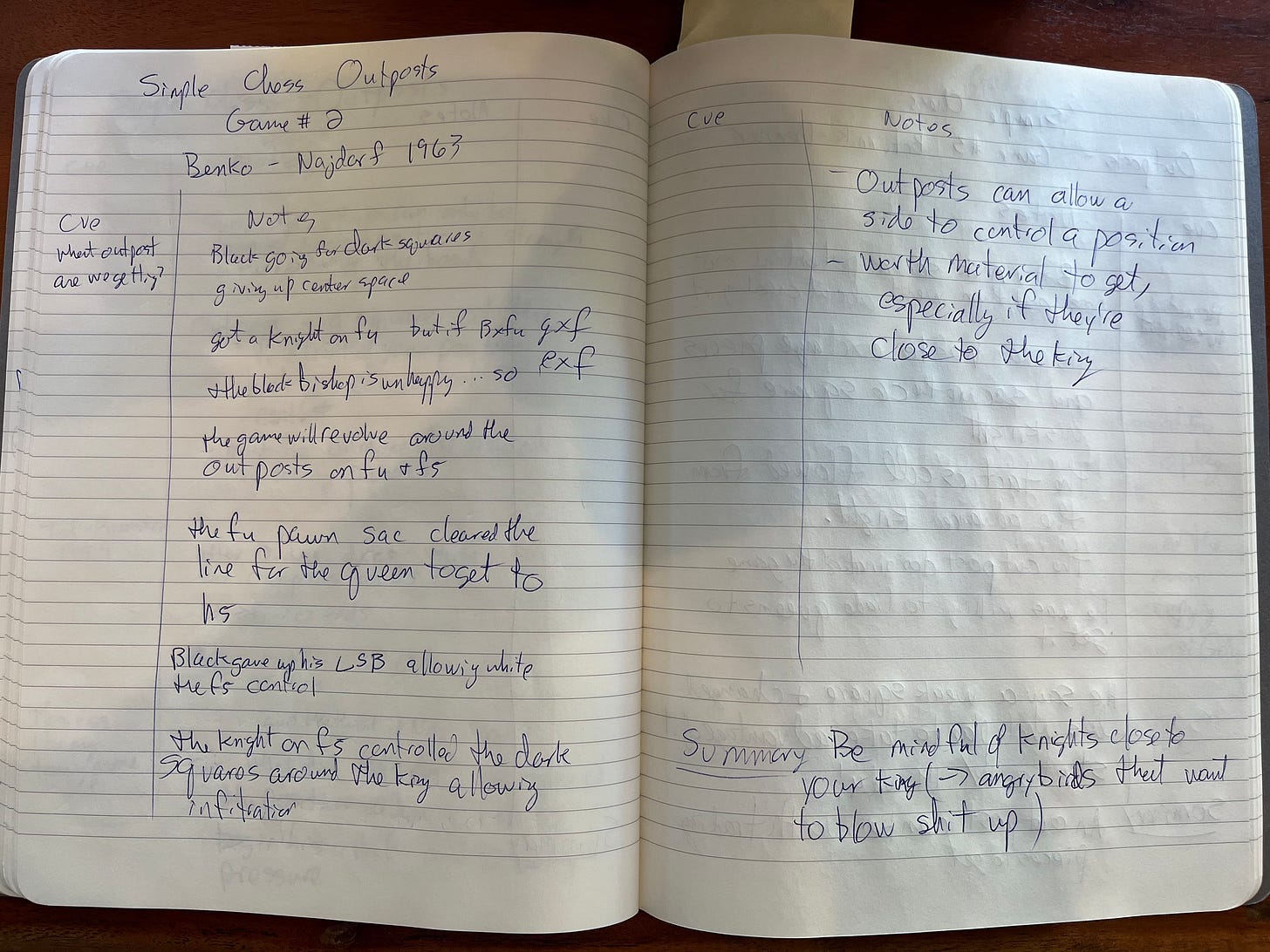
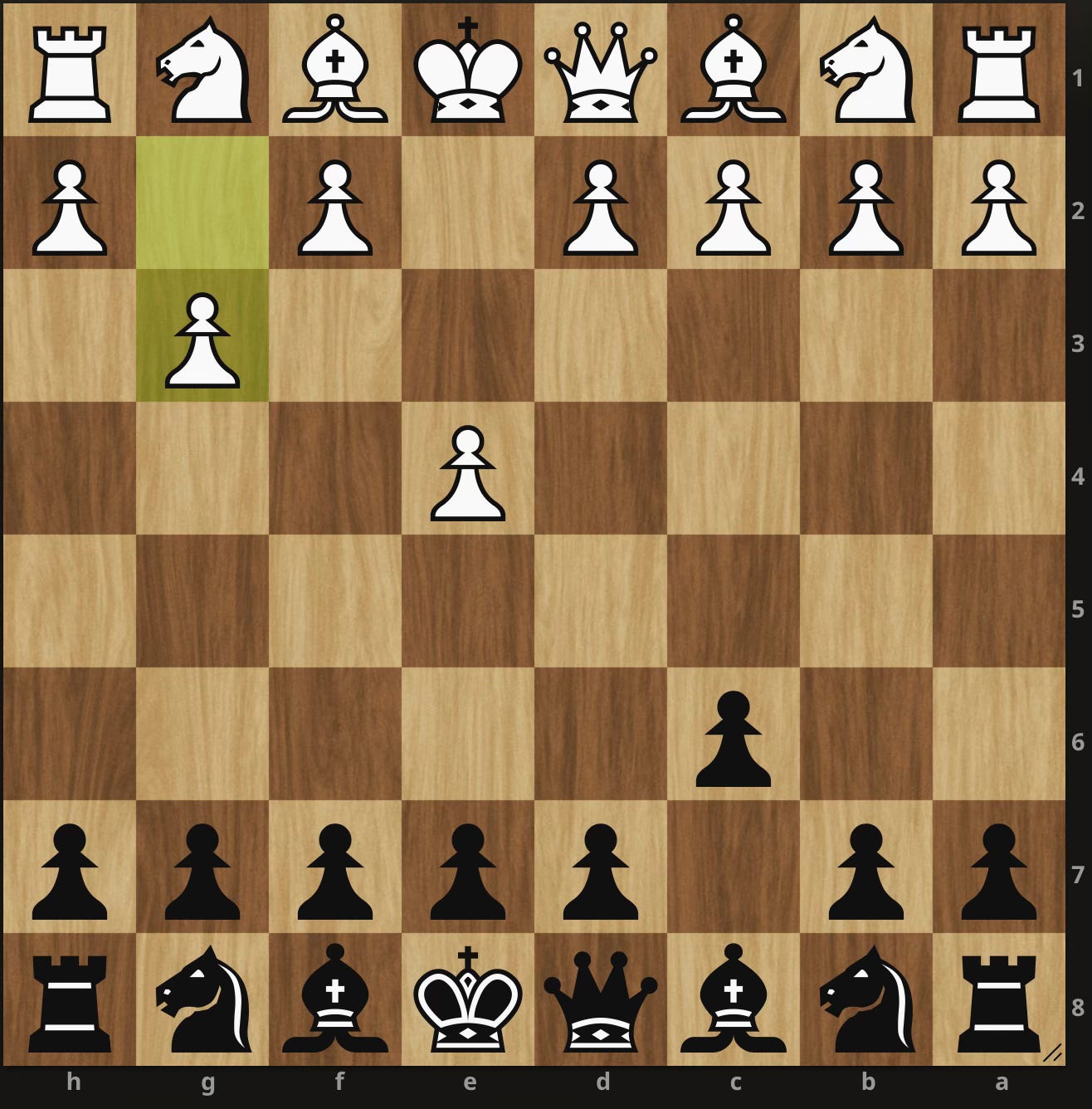
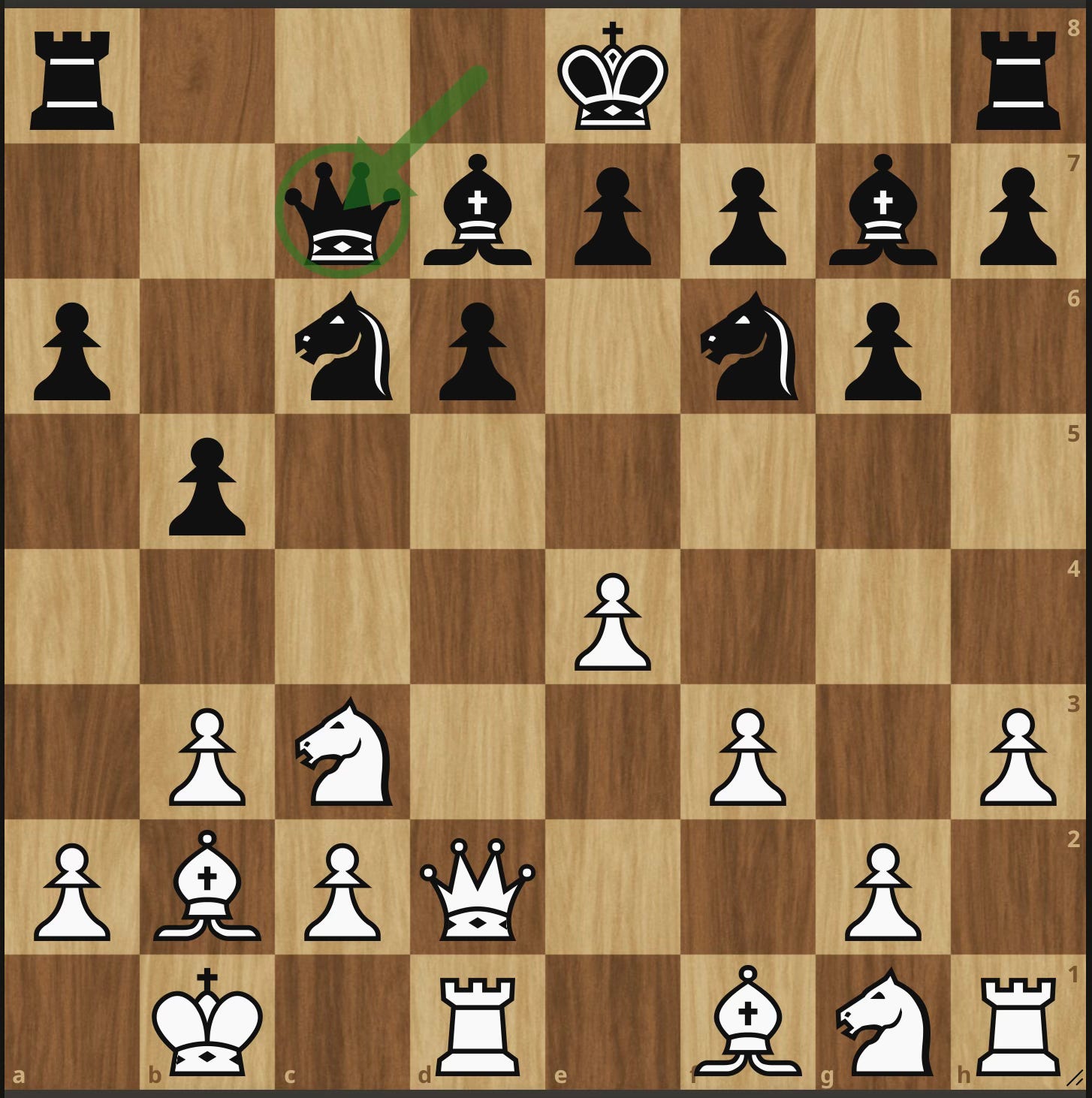
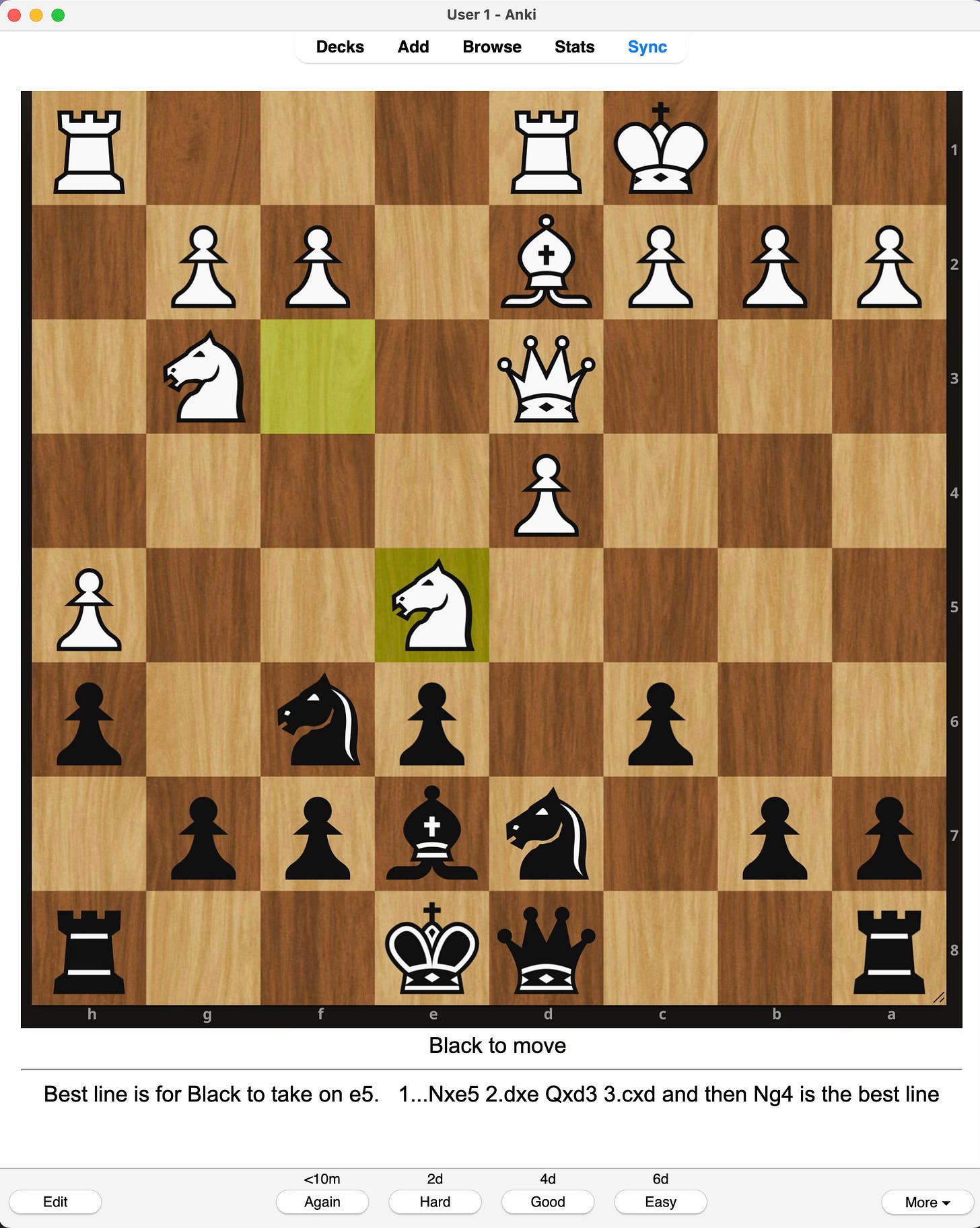
Terrific to get advice on chess improvement that's been well researched, tried and tested - much appreciated!
No one learns mathematics, or a foreign language, by watching or listening to a lecture. You must be engaged in active thinking. Learning to play chess better is very likely similar. I like how you describe this process in ways that we can understand and put in practice.